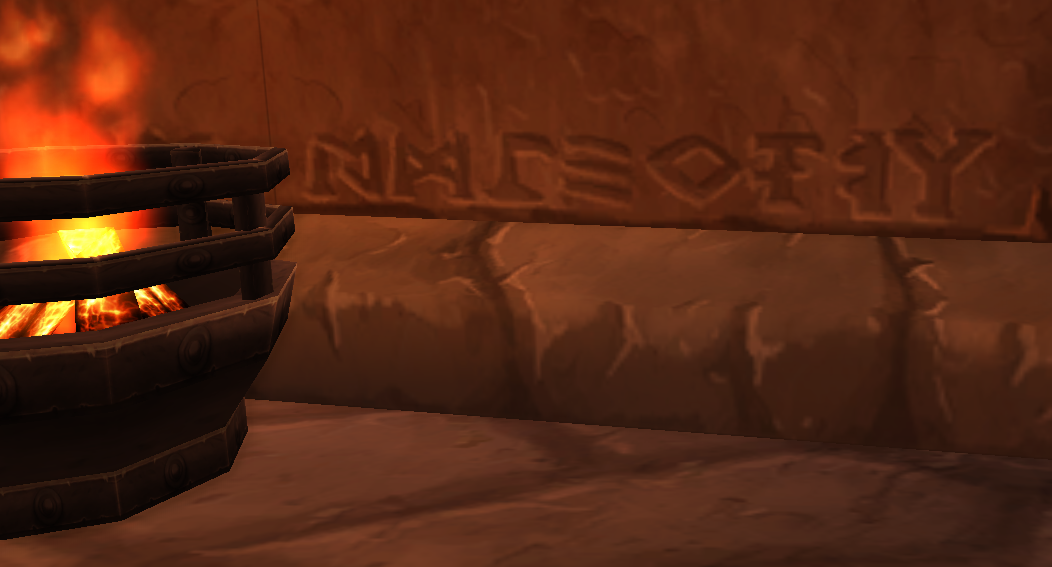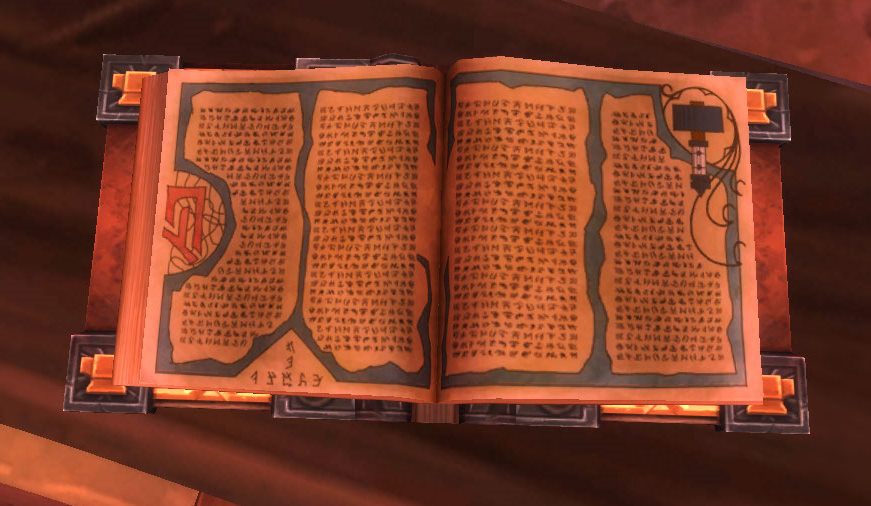In the annals of fantasy literature and folklore, few races capture the imagination quite like the Dwarves. Stalwart, industrious, and bound by ancient traditions, their very essence is steeped in the earth from which they hew their magnificent halls. Central to their unique identity, often as enduring and unyielding as the mountains they inhabit, is their language. More than mere communication, the Dwarven tongue is a living artifact, a cultural bedrock that reflects their history, values, and profound connection to stone and craft. This article delves into the intricate world of Dwarven language, exploring its philosophy, phonology, grammar, vocabulary, and its enduring impact on the fantasy genre.
The Philosophy of Stone and Secrecy
At its core, Dwarven language is a direct reflection of Dwarven culture. It is a language forged in the deep, designed for practicality, precision, and permanence. Unlike the flowing, often poetic tongues of Elves or the adaptable, evolving speech of Men, Dwarven speech tends to be robust, deliberate, and remarkably resistant to change.
Connection to the Earth: The very sounds and structure of Dwarven language are often described as echoing the world beneath the mountains. It possesses a guttural depth, a resonance that might recall the grinding of stone, the clang of a pickaxe, or the roar of a forge. This inherent connection to their environment means the language is rich in terms related to geology, mining, metallurgy, and architecture. Concepts like "mountain," "stone," "gold," "hammer," and "hall" often have multiple, highly specific terms, reflecting the paramount importance of these elements in Dwarven life.
Craftsmanship and Precision: Dwarves are renowned for their meticulous craftsmanship, and this trait extends directly to their language. There is little room for ambiguity or superfluous words. Commands are direct, descriptions are exact, and oaths are binding. This precision makes their language ideal for technical specifications, engineering plans, and the detailed recounting of historical events or ancestral lineages. Every word carries weight, every phrase is carefully chosen, reflecting the same dedication they apply to forging a masterwork blade or carving an intricate pillar.
Secrecy and Pride: Perhaps the most defining philosophical aspect of Dwarven language is its inherent secrecy. In many fantasy traditions, the true Dwarven tongue, often exemplified by J.R.R. Tolkien’s Khuzdul, is rarely, if ever, spoken in the presence of outsiders, let alone taught to them. This secrecy is born from a deep sense of pride, a distrust of other races, and a reverence for their ancient heritage. To speak the true tongue to an outsider is often considered a profound breach of tradition, a revelation of the innermost workings of their culture. This creates a fascinating dynamic where Dwarves often learn and utilize the common tongues of other races for trade and diplomacy, reserving their own language for the solemnity of their halls, the urgency of battle, or the intimacy of their kin.
Phonology and Pronunciation: The Sound of the Deep
The sound of Dwarven language is arguably its most immediately recognizable characteristic. It is often described as:
- Guttural and Deep: Emphasizing sounds produced in the throat. This gives it a powerful, resonant quality that seems to emanate from the chest rather than the mouth.
- Hard Consonants: Strong emphasis on plosives (p, b, t, d, k, g), fricatives (kh, gh, th), and affricates (ch, j). These sounds contribute to the "rough" or "harsh" impression it often leaves on non-Dwarven ears, but to Dwarves, they are strong and clear.
- Rolled ‘R’s: The trilled ‘r’ (like in Scottish or Spanish) is a common feature, adding to the rugged, almost growling quality.
- Short, Clear Vowels: While Elven languages might feature long, lilting vowels, Dwarven vowels tend to be shorter, sharper, and less prone to diphthongs, contributing to the language’s directness.
- Lack of "Soft" Sounds: There might be an intentional absence or limited use of softer sounds (like the English ‘v’ or ‘f’ in some contexts, or less sibilance), further reinforcing its perceived strength.
The overall impression is one of immense strength and gravity. A Dwarven oath, spoken in their own tongue, is not merely heard; it is felt, vibrating with the weight of tradition and unyielding resolve.
Grammar and Syntax: Precision Forged
Dwarven grammar is built for clarity and impact rather than poetic flourish. While specific grammatical structures vary between fantasy settings, common themes emerge:
- Directness: Sentences are typically structured to convey information directly. There is often little room for subtext or euphemism.
- Inflectional: Many fantasy languages, especially older ones, are inflectional, meaning words change their endings (suffixes or prefixes) to indicate tense, case, number, or gender. This allows for a certain flexibility in word order while maintaining clarity, but the core meaning remains anchored to the inflected word.
- Emphasis on Nouns and Verbs: Given their practical nature, Dwarven language often prioritizes concrete nouns (objects, places, people) and strong verbs (actions, states of being). Adjectives and adverbs, while present, might be used more sparingly or integrated into the noun/verb itself to avoid unnecessary elaboration.
- Limited Conjunctions/Prepositions: To maintain conciseness, the language might use fewer complex conjunctions or prepositions, preferring simpler sentence structures that get straight to the point.
An example in a hypothetical Dwarven tongue might be: "Hammer stone break" rather than "The hammer breaks the stone," with the inflection on "hammer" indicating it’s the subject and "stone" the object. This efficiency aligns with their pragmatic worldview.
Vocabulary: A Lexicon of the Under-Earth
The vocabulary of Dwarven language is a treasure trove of specialized terms, reflecting their deep engagement with their world:
- Mining and Metallurgy: An extensive lexicon for different types of rock, ore veins, precious metals, gems, excavation techniques, tools, and forging processes. There might be distinct words for "gold ore," "refined gold," "gold dust," and "gold artifact."
- Engineering and Architecture: Precise terms for structural elements, construction methods, underground passages, fortresses, and mechanisms.
- Warfare: A rich vocabulary for weapons, armor, tactics, and battle formations, especially those suited for close-quarters combat in tunnels or siege warfare.
- Kinship and Clan: Highly nuanced terms for family members, ancestral lines, clan affiliations, and the bonds of brotherhood. Honorifics and titles are extremely important.
- Oaths, Curses, and Blessings: Words related to these concepts carry immense power and are often tied to ancient traditions and spiritual beliefs. A Dwarven curse, once uttered, is believed to hold potent magic.
- History and Lore: Words for ancient events, legendary heroes, significant places, and the vast chronicle of their people.
- Limited "Surface" Vocabulary: Conversely, words for concepts related to the open sky, forests, oceans, or agriculture might be fewer, less nuanced, or borrowed from other languages, reflecting their preference for the world beneath the surface.
Dwarven names, both for individuals and places, are also deeply significant. Personal names often carry ancestral weight or describe a characteristic, while place names are descriptive of geological features or historical events, such as "Ironpeak," "Deepdelve," or "Grimhold."
The Runic Script: Carved in Eternity
The written form of Dwarven language is almost universally depicted as a runic script. These runes are characterized by:
- Angularity and Straight Lines: Unlike the curved, flowing scripts of Elves, Dwarven runes are typically composed of straight lines, making them ideal for carving into stone, wood, or metal with chisels, hammers, or engravers.
- Durability and Permanence: Just as their spoken word is weighty, their written word is meant to endure. Runes are not lightly inscribed; they are carved for eternity, often imbued with a sense of magic or ancestral power.
- Practicality: Each rune often represents a single sound or concept, making the script efficient and straightforward.
- Magical Significance: In many fantasy settings, runes can be enchanted, used to imbue weapons with power, protect structures, or record powerful spells. The act of carving a rune is often a ritual in itself.
Examples like Tolkien’s Cirth runes illustrate this perfectly, designed to be sharp and robust, reflecting the Dwarven aesthetic and practical needs.
Dialects and Evolution: Slow but Steady
While Dwarven language is known for its conservatism, it is not entirely static.
- Geographic Dialects: With isolated mountain holds often separated by vast distances or impassable terrain, regional dialects naturally arise. These might involve slight variations in pronunciation, vocabulary, or even minor grammatical shifts. However, a core understanding would likely persist across all Dwarven groups.
- Slow Evolution: Due to their long lifespans, reverence for tradition, and the secrecy of their language, Dwarven tongues evolve at a much slower pace than those of Men. Ancient texts and songs remain largely comprehensible to modern Dwarves, fostering a deep connection to their past.
- Influence (and Resistance): While Dwarves often learn other languages, they are highly resistant to allowing foreign words to infiltrate their true tongue. Any borrowed words would likely be heavily "Dwarvenized" in pronunciation and inflection, and primarily used in external communication rather than within their sacred language.
The Secret Tongue: Khuzdul and Beyond
J.R.R. Tolkien’s creation, Khuzdul, serves as the quintessential example of a Dwarven language. Tolkien deliberately designed Khuzdul to be fragmentary and mysterious, mirroring the Dwarves’ reluctance to share it. He gave it a Semitic-like root system (though not fully developed), reflecting its ancient, guttural, and complex nature, complete with its own runic script (Cirth).
Khuzdul is rarely heard outside Dwarven halls, except for war cries like "Baruk Khazâd! Khazâd ai-mênu!" ("Axes of the Dwarves! The Dwarves are upon you!"). This deliberate incompleteness in Tolkien’s legendarium underscores the profound secrecy and reverence Dwarves hold for their language, making it more powerful through its very rarity. This concept has been widely adopted and adapted across countless fantasy worlds, where the "true" Dwarven tongue remains an elusive, powerful secret.
Impact and Legacy
The meticulous crafting of Dwarven language in fantasy serves several crucial purposes:
- World-Building: It adds immense depth and realism to fantasy worlds, making the Dwarven race feel truly ancient and distinct.
- Characterization: The language itself is a character trait, reinforcing the Dwarves’ stoicism, their pride, their connection to their craft, and their insular nature.
- Immersion: For readers and players, encountering fragments of a unique Dwarven tongue, even if just a few words or names, deepens immersion and reinforces the alien yet familiar quality of fantasy races.
- Thematic Resonance: It highlights universal themes of cultural preservation, the power of tradition, and the importance of identity in the face of an ever-changing world.
Conclusion
The Dwarven language is far more than a simple means of communication; it is the very soul of the Dwarven people, a legacy carved into the mountains themselves. From its guttural phonology that echoes the deep earth, to its precise grammar reflecting their masterful craftsmanship, and its secret vocabulary guarding their ancient traditions, every aspect of their tongue speaks volumes about who they are. It is a language of enduring strength, unbreakable oaths, and a profound, unyielding connection to their heritage. In the resonant sounds of the Dwarven tongue, one can truly hear the beating heart of a people forged in fire and stone, speaking across the ages from the deep places of the world.


